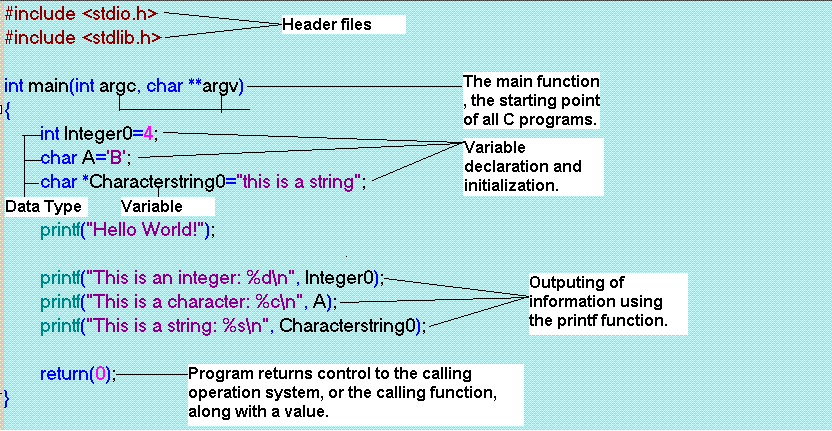Most C programs have a few common elements:
Header files, variables, and functions.
Header files- Files
used to include functions from the C standard library which will be used in a
program. The extension for header files is ".h". The most common
header file in the C language is called "stdio.h", meaning
standard input/output. This header file contains functions for accepting input from a user and
outputing information on screen. To make our programs print data to your
computer's screen, we use the "printf()" function. To accept
user input, we using the "scanf()" function.
Variables- An indentifier in a program that is used to
store some type of information. Types of information you may want
to store are integers, characters, or strings. To store any data,
variables must be declared with their specific type before use.
Functions- The purpose of a function is to perform a
specific task and/or return a value after performing its
operations. To call a function, we specify the function's name
followed by open and closed parenthesis, "()". Inside the parenthesis, we
may include arguments; variables which allow the function to accept data.
Below is a sample showing these elements:
